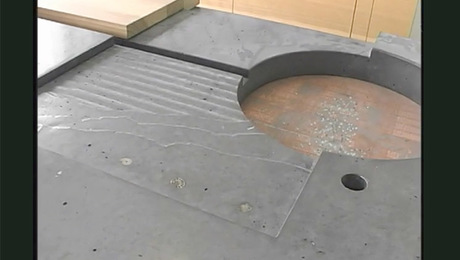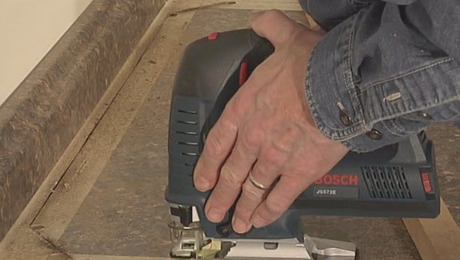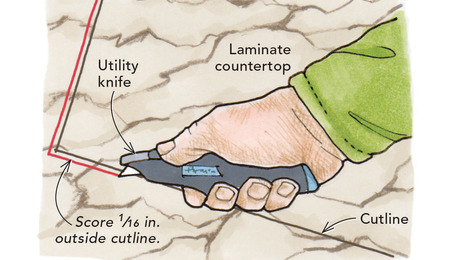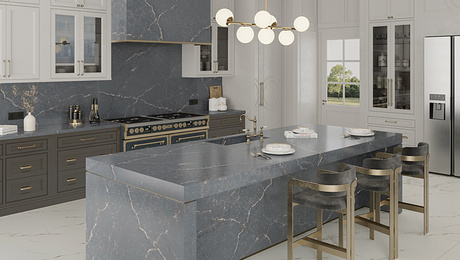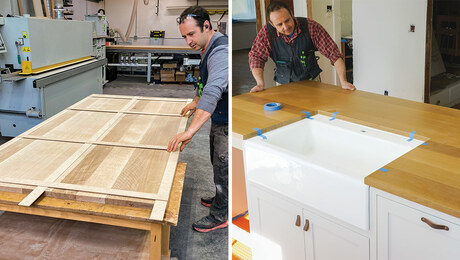Tiling Over a Laminate Counter
Thanks to cement backerboard, you can make a new countertop without ripping out the old one.
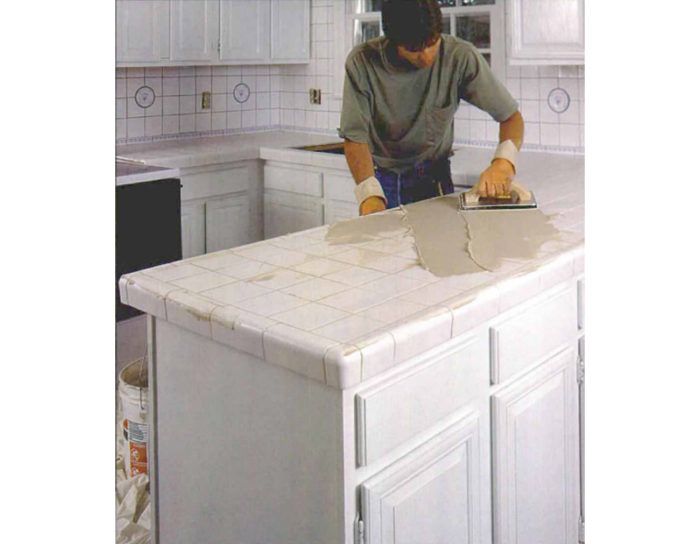
Synopsis: Countertop plastic laminate that’s seen its day can be covered with cement backerboard and tile. A tile contractor explains the process, with tips on materials and techniques.
I tear out tons of tub surrounds and sheet vinyl every year and install ceramic tile. That type of remodeling makes up the bulk of my work. Other than an occasional mud-set floor, I use cementitious backerboard as tile underlayment on walls and floors. After having mixed results with plywood, I found that backerboard also works great for countertop renovations.
The major advantage to installing backerboard over an existing laminate countertop is that it keeps down the total cost of the tile installation. Instead of building a new countertop, I set the tile on a sheet of 1/4-in. backerboard that’s screwed to the old laminate. The backerboard provides a sturdy, stable substrate for the tile, it saves me a day (or more) of labor, and it can knock several hundred dollars off the total cost of the project. (Obviously, this method won’t work on post-formed counters.)
Why not install the tile directly on the countertop? It doesn’t work. I learned the hard way that latex- or polymer-modified thinsets don’t bond well to plastic laminate, even though a mortar manufacturer assured me that they would. After two installation failures involving only thinset, I now overlay the laminate with backerboard and haven’t had a callback since.
Make sure the original counter is sound
Because a new sink is often part of a counter renovation, my first step is to determine the size of the new sink cutout. If the new sink is smaller than the original, I have to rebuild the counter to give the sink proper support before overlaying the top with backerboard. If the new sink dimensions are larger, I cut the countertop to the correct size and continue with the installation. (It’s also worth noting here that unless they have flexible water supplies, most sinks need to be replumbed due to the increased depth of the counter.)
I also check the condition of the counter’s particle board. Prolonged exposure to steam from a dishwasher or water seepage from around the sink can turn particle board into little more than loose sawdust. The best way to check is to crawl into the base cabinet and examine the underside of the countertop with a flashlight. If I can dig particleboard apart with a screwdriver or pocketknife, or if it’s swelling from exposure to moisture, then the damage is probably too severe to use this installation method. Scrap the existing top, rebuild it, and quit reading this article.
All laminate countertops will move when you pound a fist on them, but excessive movement will lead to cracked grout joints and, eventually, loose tiles. Cement backerboards help to tighten any floor or countertop if installed properly, but bouncy or spongy tops need to be fixed or scrapped. Often, a few screws driven up into the countertop through the cabinets’ corner brackets will stiffen a bouncy top.
For more photos and details, click the View PDF button below:










